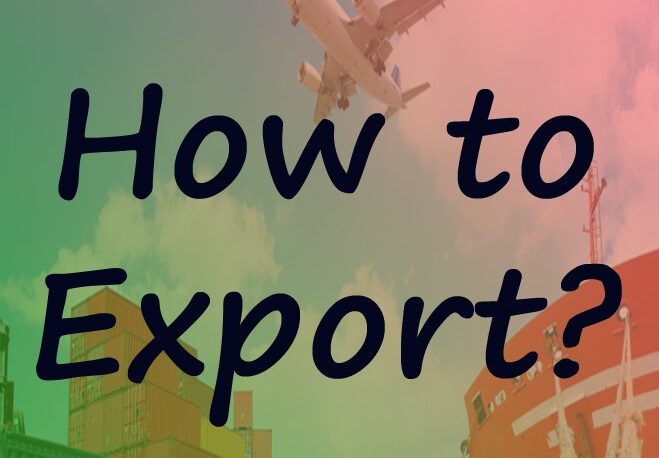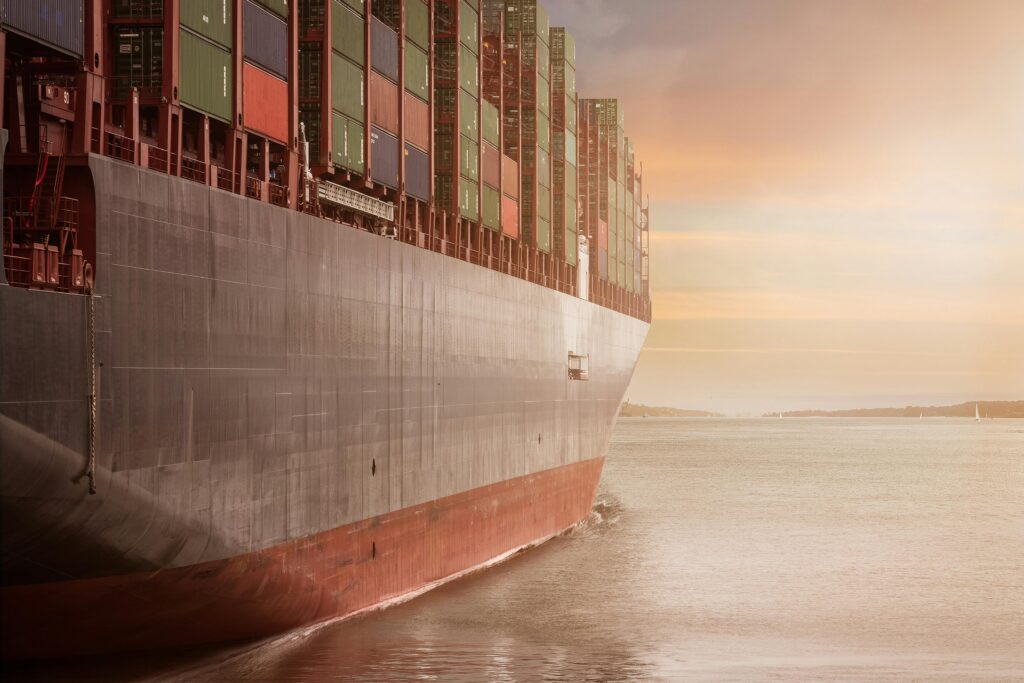How To Export ?
Table of Contents
ToggleINTRODUCTION
EEPC India has been the face of Indian engineering exports over a span of 65 years when India grew from a nation exporting just $10 million of engineering goods in 1955 to $76.04 billion in 2019-20 and is regarded as the model EPC in India by the Union Ministry of Commerce and Industry– How to Export ?
FIRST CONTACT POINT FOR EXPORTS
The Directorate General of Foreign Trade (DGFT) with its four zonal offices Mumbai, Delhi, Chennai and Kolkata along with 35 other offices are your first point of contact when you want to export.
PRINCIPLE OF EXPORTS
Taxes, duties and charges cannot be exported, so you can avail refunds/reimbursements on duties and taxes paid if you export.
STARTING EXPORTS
To start exports any merchant export / manufacturer exporter/ service exporter holding a Proprietary firm/ Partnership Firm/Public and Private company needs to name his company having a company logo and company website.
STEPS IN ESTABILISHING AN EXPORT BUSINESS
Firstly an exporter needs to open a current account with a bank authorised to deal in Foreign Exchange.
Secondly the exporter (even importer) needs to obtain a PAN number from the Income Tax Department.
Thirdly an exporter has to obtain a 10 digit number IEC (Importer-Exporter Code) from the regional offices of DGFT in form ANF 2A along with documents. Applicants can also apply for e-IEC on the DGFT website (http://dgft.gov.in/). It is to be noted only one IEC can be obtained against a single PAN.
WHAT TO EXPORT?
Almost everything is allowed to be freely exported, except the list of restricted and prohibited items given on the DGFT website. The primary search unit forany product in the international trade is ITC HS Code (International Trade Classification Harmonised System Code).
Finding the right product to export requires extensive and thorough data mining. Studying the recent trend of exports of different products from India enables one to decide on the product to be exported.
SELECTING YOUR DESTINATION COUNTRY.
An overseas market should be selected after extensively studying the customs tariffs of the products (to be exported) around the world, rules of origin, FTAs, NTMs , payment terms and etc. Almost all the engineering items fall under the perimeter of EEPC India, who will help in promoting an exporter’s products in international markets by facilitating participation in trade fairs, exhibitions abroad. An exporter willing to be a member of EEPC India needs to register for Registration-cum-Membership Certificate (RCMC).
FINDING BUYERS
Participation in various trade fairs, buyer seller meets, exhibitions, B2B portals, is an effective tool to find buyers. After identifying one’s potential buyer an exporter needs to procure orders. He has to decide upon crucial points like pricing, freight charges, and payment terms. Finally it leads to signing of the contract, managing production and supplies, resolve quality issues, delivery of goods and follow up and realization of payments.
INCO TERMS
An exporter has to negotiate a sales contract with the buyer for trade to take place. International Commercial or INCO terms significantly reduce misunderstandings among traders and thereby minimize trade disputes and litigation.
Inco terms that apply to any mode of transport are: EXW (Ex Works), FCA (Free Carrier), CPT (Carriage Paid To), CIP (Carriage and Insurance Paid To), DAT (Delivered at Terminal), DAP (Delivered at Place), DDP (Delivered Duty Paid).
Inco terms that apply to sea and inland waterway transport only: FAS (Free Alongside Ship), FOB (Free on Board), CFR (Cost and Freight), CIF (Cost, Insurance, and Freight).
PAYMENT TERMS
While negotiating Sales Contract an exporter also needs to decide on the way money will be paid to him for his exports. Letter of Credit solves Issues of Mutual Mistrust by using Banks as arbiters.
INDUSTRY REGISTRATION
Your factory should register with the department of Industries of the relevant state government. Right documentation and regular update of your company data is often a pre-requisite for access to government funds.
EXIM BANK
EXIM Bank assists an exporter in taking buyer’s credit. If an exporter plans to export projects , EXIM Bank gives Line of Credit to the destination country.
COVERING RISKS THROUGH ECGC
The Export Credit Guarantee Corporation of India Limited (ECGC) is a government owned company to assist an exporter in mitigating export risks. Types ofrisks covered by ECGC:
Commercial Risks-Buyer goes bankrupt, death, default of payment for any reason other than product dispute.
Political Risks- Government preventing release of funds, war/revolution.
PROCESSING AN EXPORT ORDER
i. Confirmation of order
On receiving an export order, it should be examined carefully in respect of items, specification, payment conditions, packaging, delivery schedule, etc. and then the order should be confirmed. Accordingly, the exporter may enter into a formal contract with the overseas buyer.
ii. Procurement of Goods
After confirmation of the export order, immediate steps may be taken for procurement/manufacture of the goods meant for export. It should be remembered that the order has been obtained with much efforts and competition so the procurement should also be strictly as per buyer’s requirement.
iii. Quality Control
In today’s competitive era, it is important to be strictly quality conscious about the export goods. The Government has notified certain private Inspection Agencies who can do pre-shipment inspections.
Foreign buyers may also lay down their own standards/specifications and insist upon inspection by their own nominated agencies. Maintaining high quality is necessary to sustain in export business.
iv. Finance
Exporters are eligible to obtain pre-shipment and post-shipment finance from Commercial Banks at concessional interest rates to complete the export transaction. Packing Credit advance in pre-shipment stage is granted to new exporters against lodgment of L/C or confirmed order for 180 days to meet working capital requirements for purchase of raw material/finished goods, labour expenses, packing, transporting, etc. Normally Banks give 75% to 90% advances of the value of the order keeping the balance as margin. Banks adjust the packing credit advance from the proceeds of export bills negotiated, purchased or discounted.
Post Shipment finance is given to exporters normally upto 90% of the Invoice value for normal transit period and in cases of usance export bills upto notional due date. The maximum period for post-shipment advances is 180 days from the date of shipment. Advances granted by Banks are adjusted by realization of the sale proceeds of the export bills. In case export bill becomes overdue Banks will charge commercial lending rate of interest.
v. Labeling, Packaging, Packing and Marking
The export goods should be labeled, packaged and packed strictly as per the buyer’s specific instructions. Regular interface packaging firms is necessary in order to comply with varied equipments. Packaging is specified by the product’s requirements, consumer requirements, distribution requirements, transportation and storage requirements.
vi. Insurance
An exporter can avail four types of marine insurance policy covers risks of loss or damage to the goods during the while the goods are in transit. Hull Insurance covers the insurance of the vessel and its equipment. Cargo Insurance includes the cargo or goods contained in the ship. Freight insurance is applicable if the ship is lost on the way or the cargo is damaged or stolen. Liability insurance is the one in which the insurer undertakes to indemnify against the loss which the insured may suffer on account of liability to a third party caused by collision of the ship and other similar hazards. Generally in CIF contract the exporters arrange the insurance whereas for C&F and FOB contract the buyers obtain insurance policy.
vii. Delivery
It is important feature of export and the exporter must adhere the delivery schedule. Planning should be there to let nothing stand in the way of fast and efficient delivery.
viii. Customs Procedures
It is necessary to obtain PAN based Business Identification Number (BIN) from the Customs prior to filing of shipping bill for clearance of export good and open a current account in the designated bank for crediting of any drawback amount and the same has to be registered on the system.
In case of Non-EDI, the shipping bills or bills of export are required to be filled in the format as prescribed in the Shipping Bill and Bill of Export (Form) regulations, 1991. An exporter need to apply different forms of shipping bill/ bill of export for export of duty free goods, export of dutiable goods and export under drawback etc.
Under EDI System, declarations in prescribed format are to be filed through the Service Centers of Customs. A checklist is generated for verification of data by the exporter/CHA. After verification, the data is submitted to the System by the Service Center operator and the System generates a Shipping Bill Number, which is endorsed on the printed checklist and returned to the exporter/CHA. In most of the cases, a Shipping Bill is processed by the system on the basis of declarations made by the exporters without any human intervention. Where the Appraiser Dock (export) orders for samples to be drawn and tested, the Customs Officer may proceed to draw two samples from the consignment and enter the particulars thereof along with details of the testing agency in the ICES/E system.
Any correction/amendments in the check list generated after filing of declaration can be made at the service center, if the documents have not yet been submitted in the system and the shipping bill number has not been generated. In situations, where corrections are required to be made after the generation of the shipping bill number or after the goods have been brought into the Export Dock, amendments is carried out in the following manners.
1. The goods have not yet been allowed “let export” amendments may be permitted by the Assistant Commissioner (Exports).
2. Where the “Let Export” order has already been given, amendments may be permitted only by the Additional/Joint Commissioner, Custom House, in charge of export section.
In both the cases, after the permission for amendments has been granted, the Assistant Commissioner / Deputy Commissioner (Export) may approve the amendments on the system on behalf of the Additional /Joint Commissioner. Where the print out of the Shipping Bill has already been generated, the exporter may first surrender all copies of the shipping bill to the Dock Appraiser for cancellation before amendment is approved on the system.
ix. Customs House Agents
Custom House Agent (CHA) is licensed to do an exporter’s transactions with customs. CHA assist an exporter in custom related documentation for exports.
x. Documentation
FTP 2015-2020 describe the following mandatory documents for import and export.
- Bill of Lading/ Airway bill
- Commercial invoice cum packing list
- shipping bill/ bill of export/ bill of entry (for imports)
(Other documents like certificate of origin, inspection certificate etc may be required as per the case.)
xi. Submission of documents to Bank
After shipment, it is obligatory to present the documents to the Bank within 21 days for onward dispatch to the foreign Bank for arranging payment. Documents should be drawn under Collection/Purchase/Negotiation under L/C as the case may be, along with the following documents
- – Bill of Exchange
- – Letter of Credit (if shipment is under L/C)
- – Invoice
- – Packing List
- – Airway Bill/Bill of Lading
- – Declaration under Foreign Exchange
- – Certificate of Origin/GSP
- – Inspection Certificate, wherever necessary
- – Any other document as required in the L/C or by the buyer or statutorily.
xii. Realization of Export Proceeds
As per FTP 2015-2020, all export contracts and invoices shall be denominated either in freely convertible currency of Indian rupees, but export proceeds should be realized in freely convertible currency except for export to Iran.
Export proceeds should be realized in 9 months. INDIA

